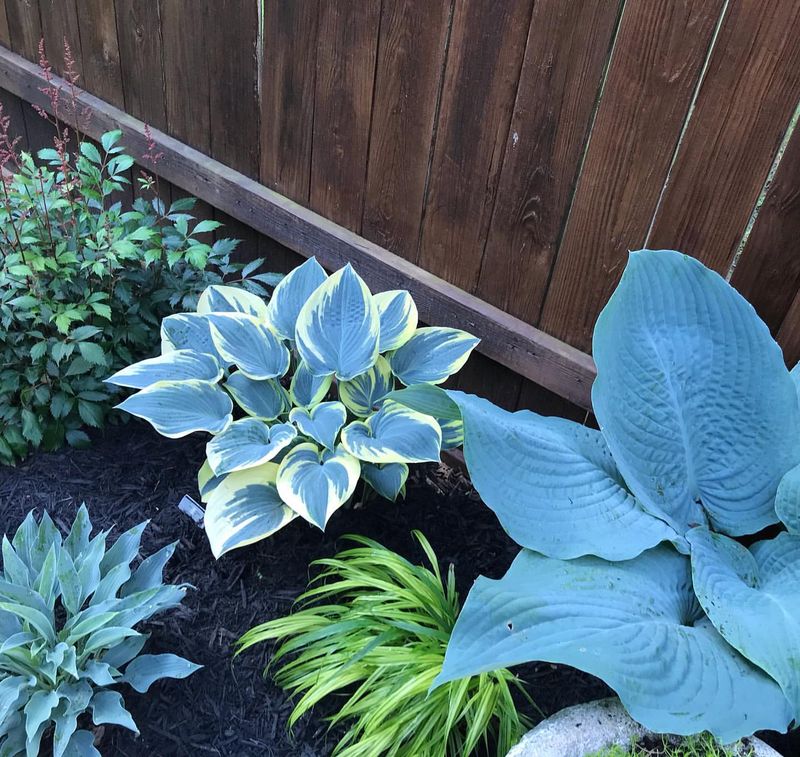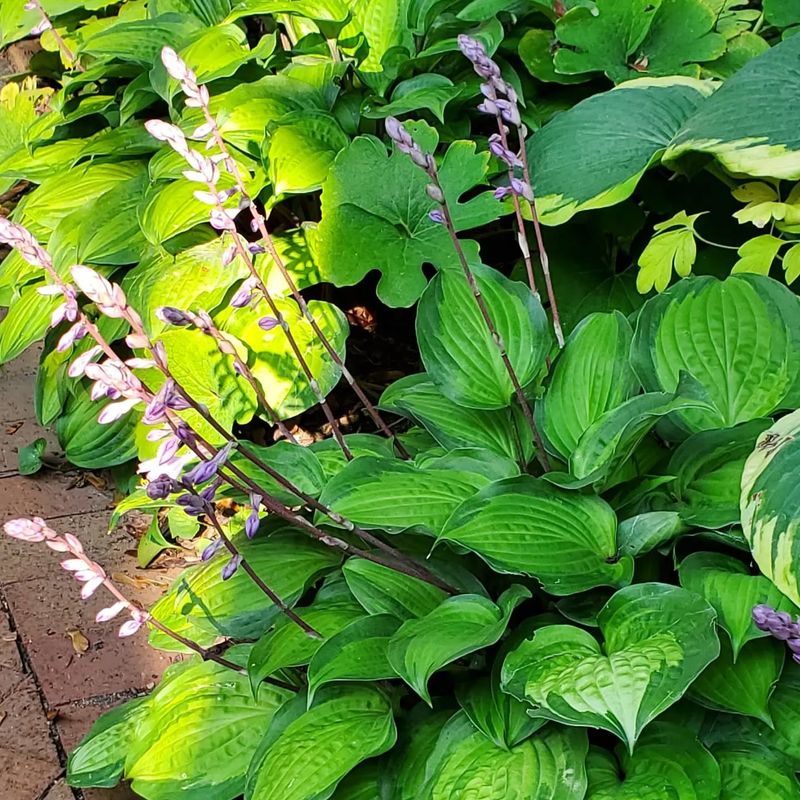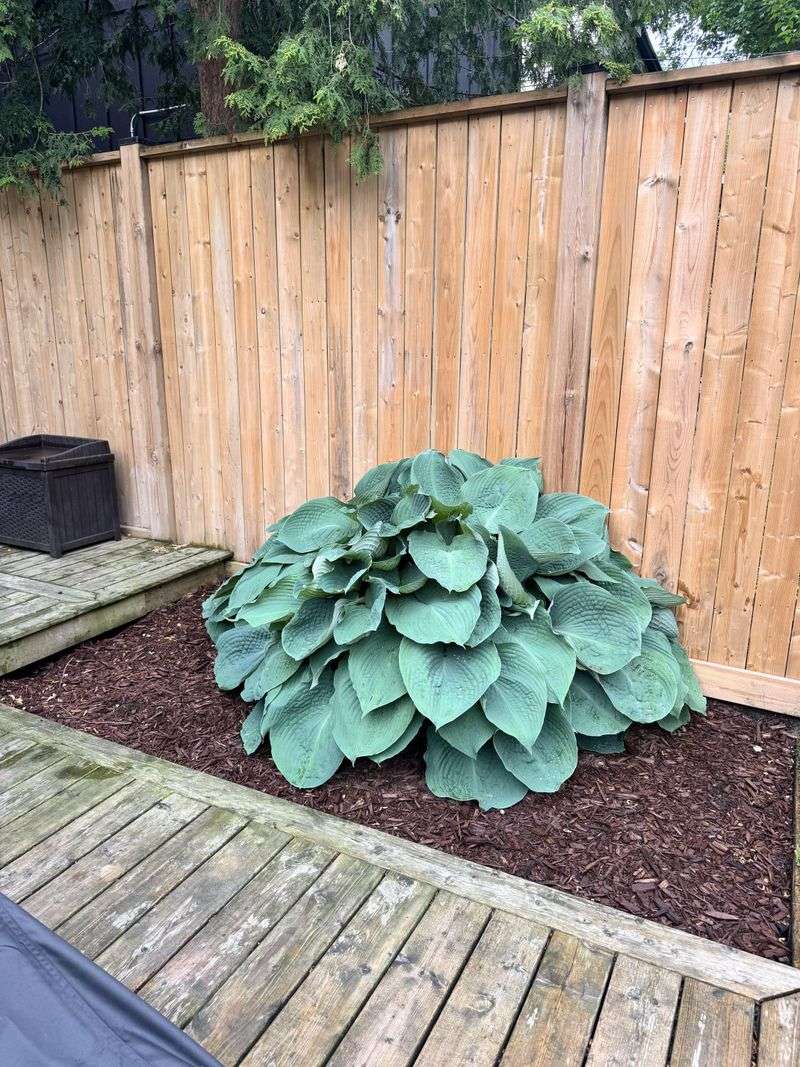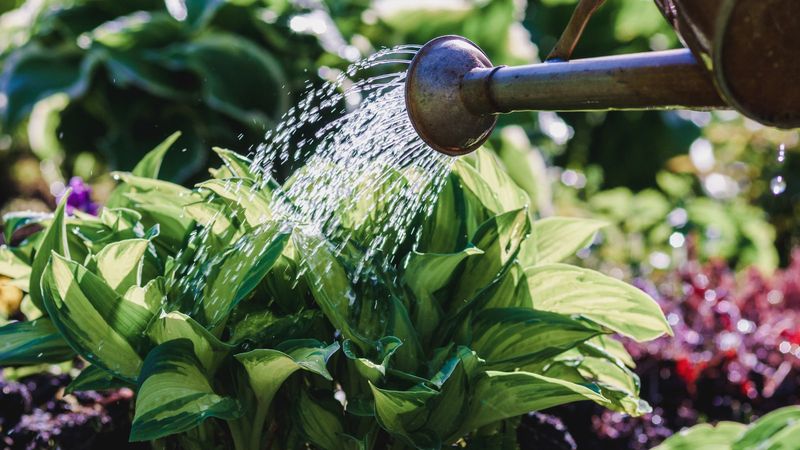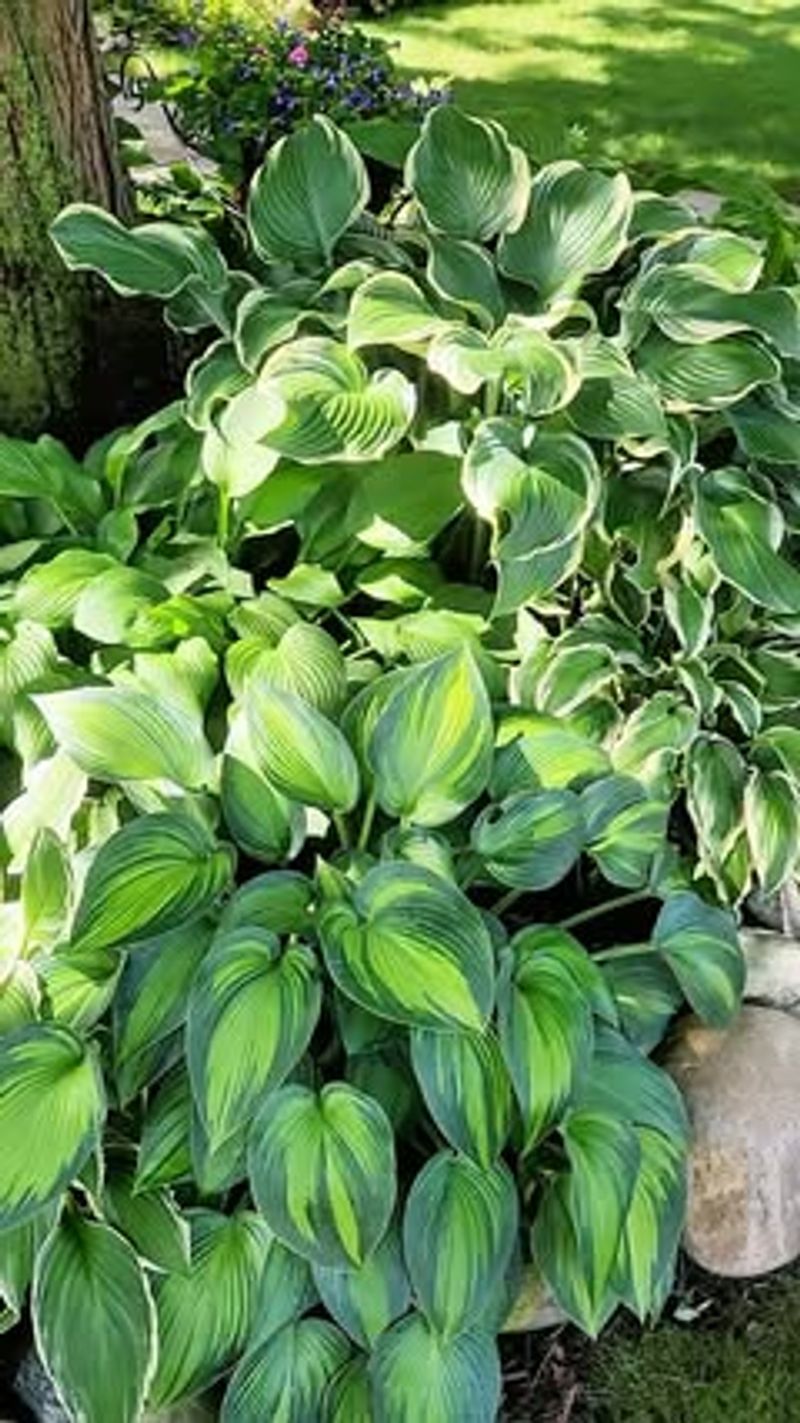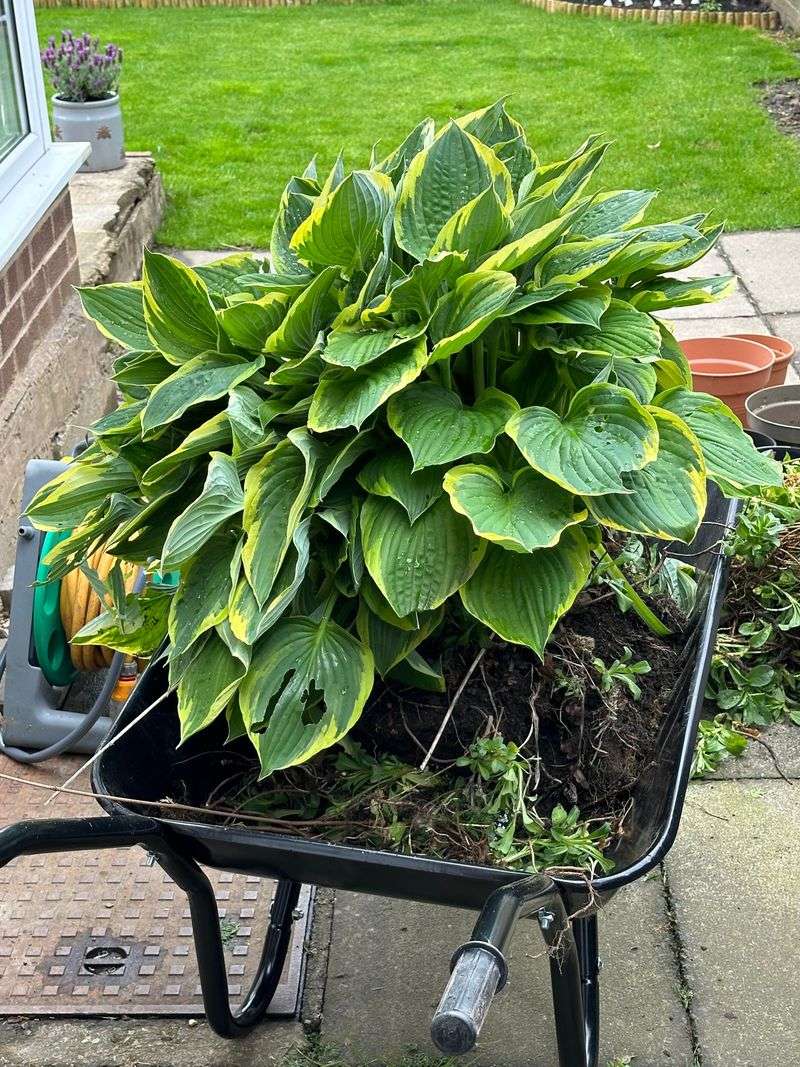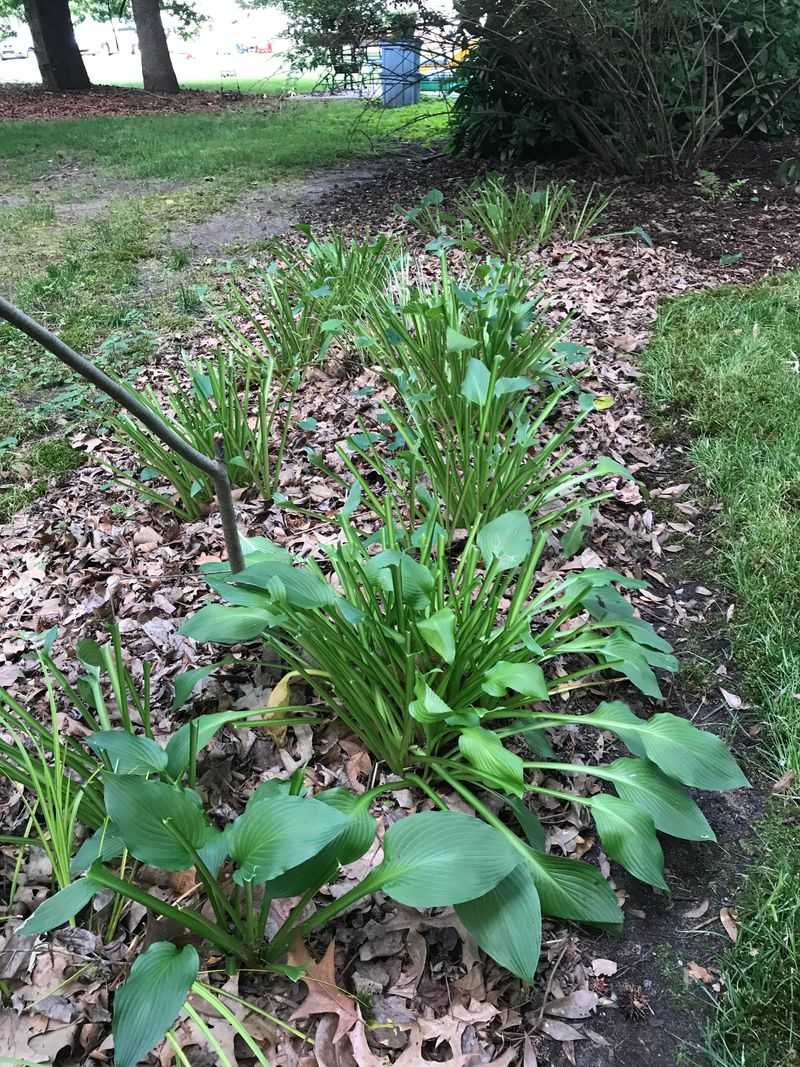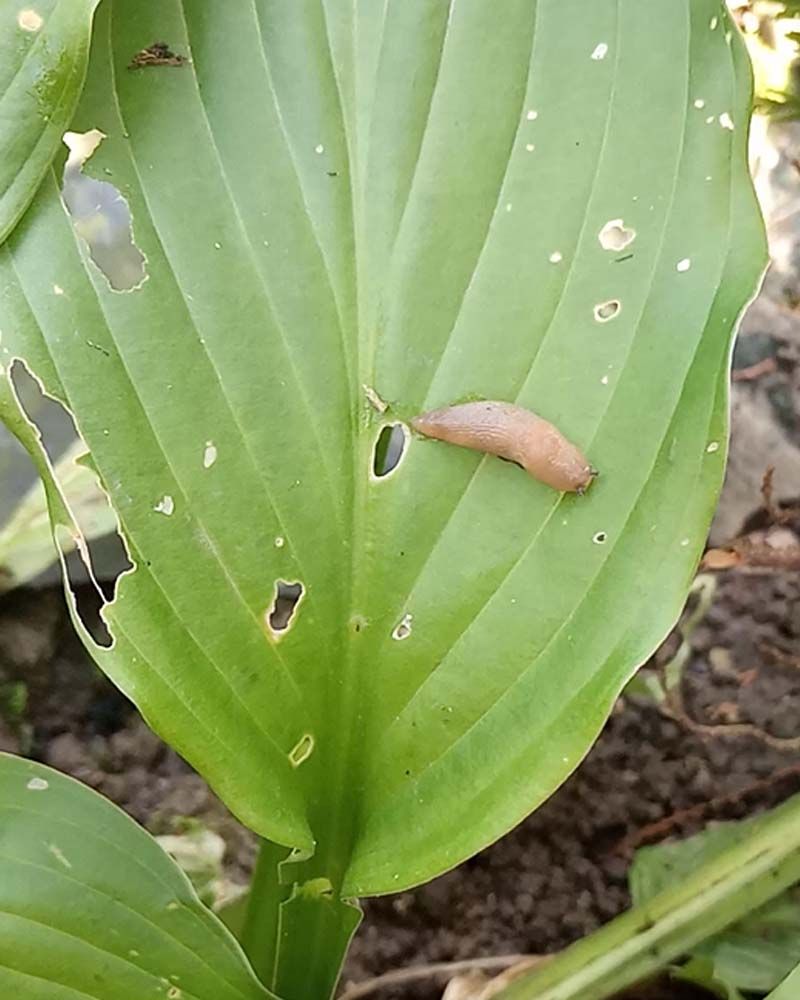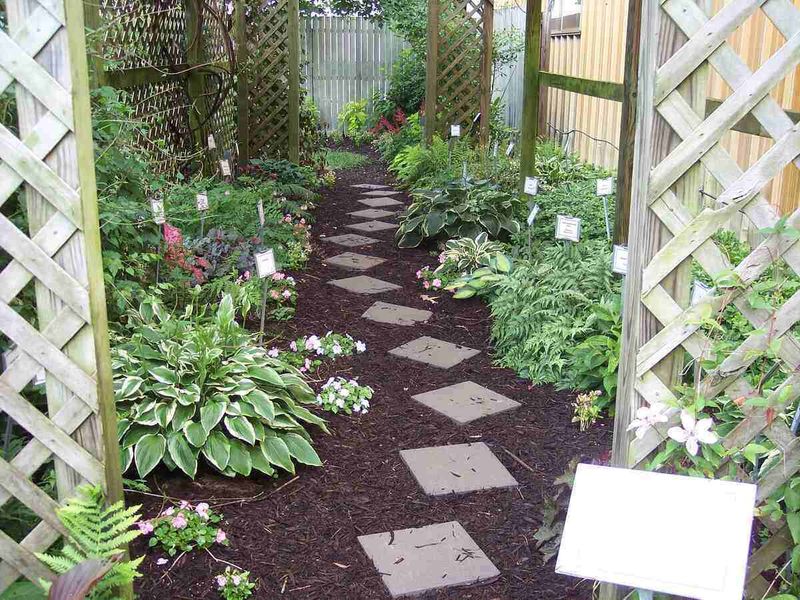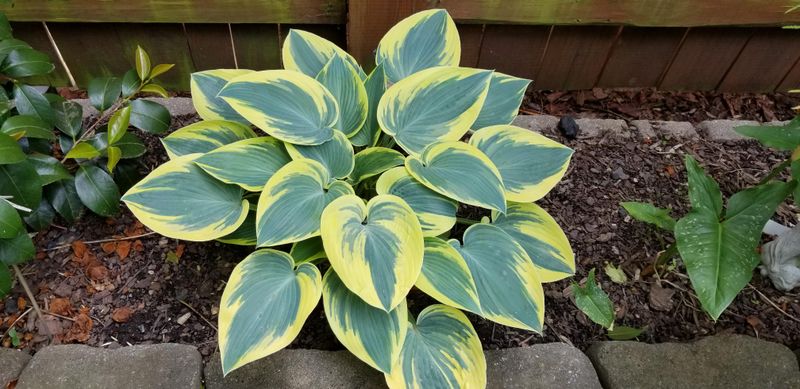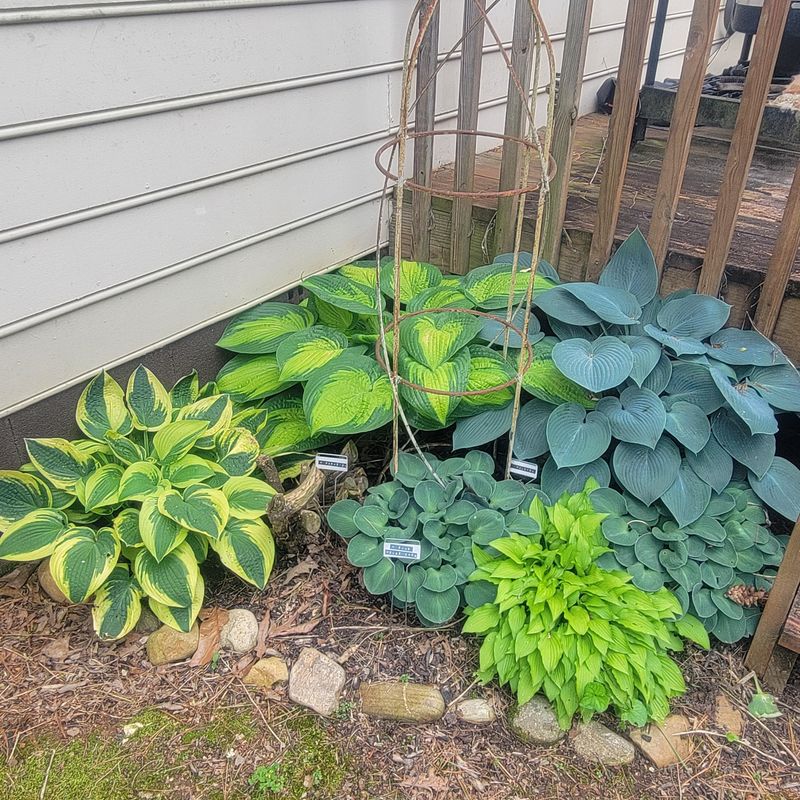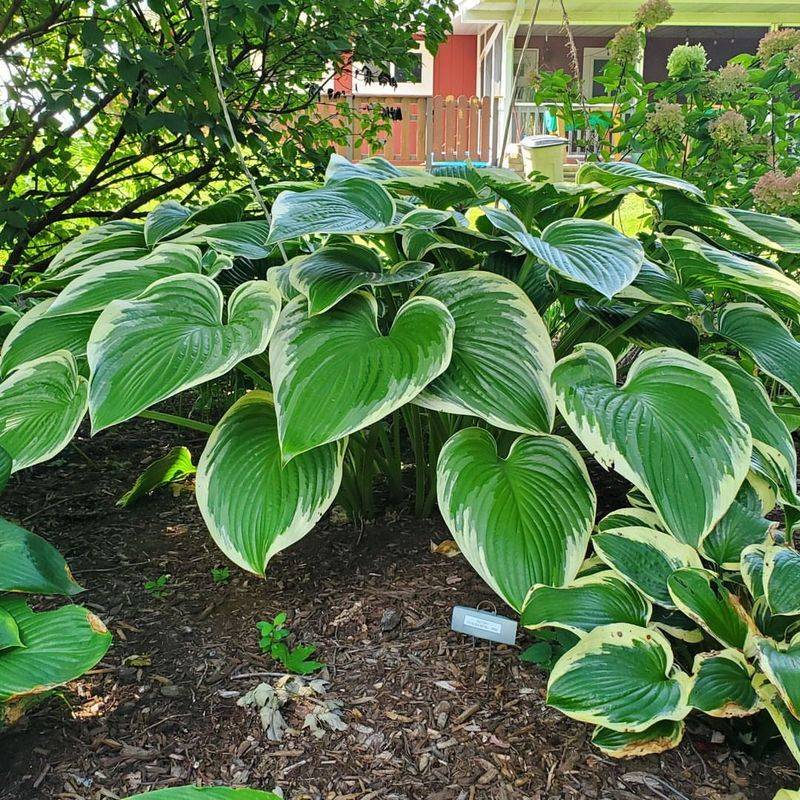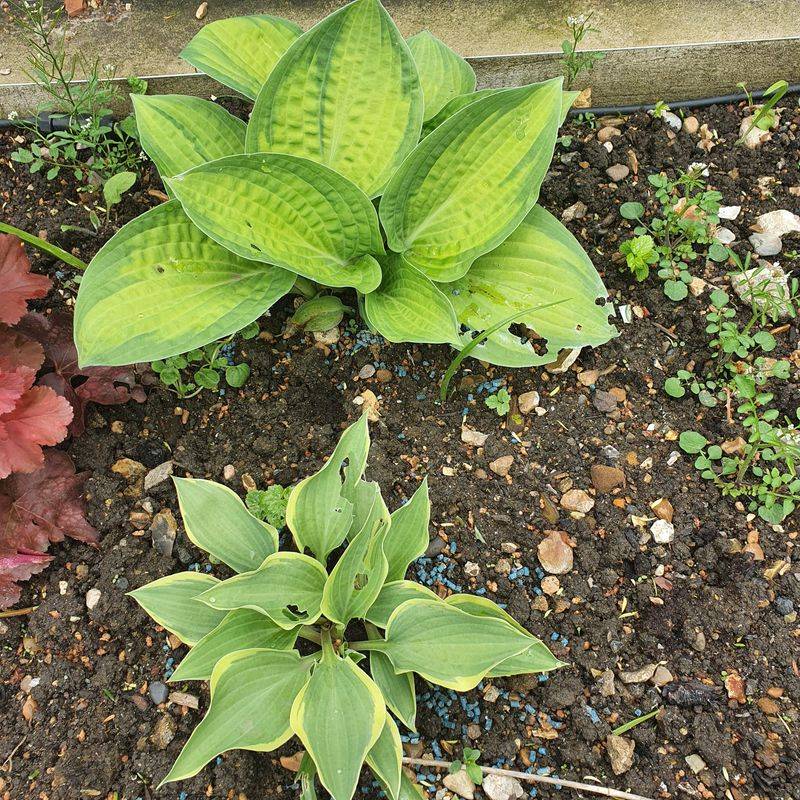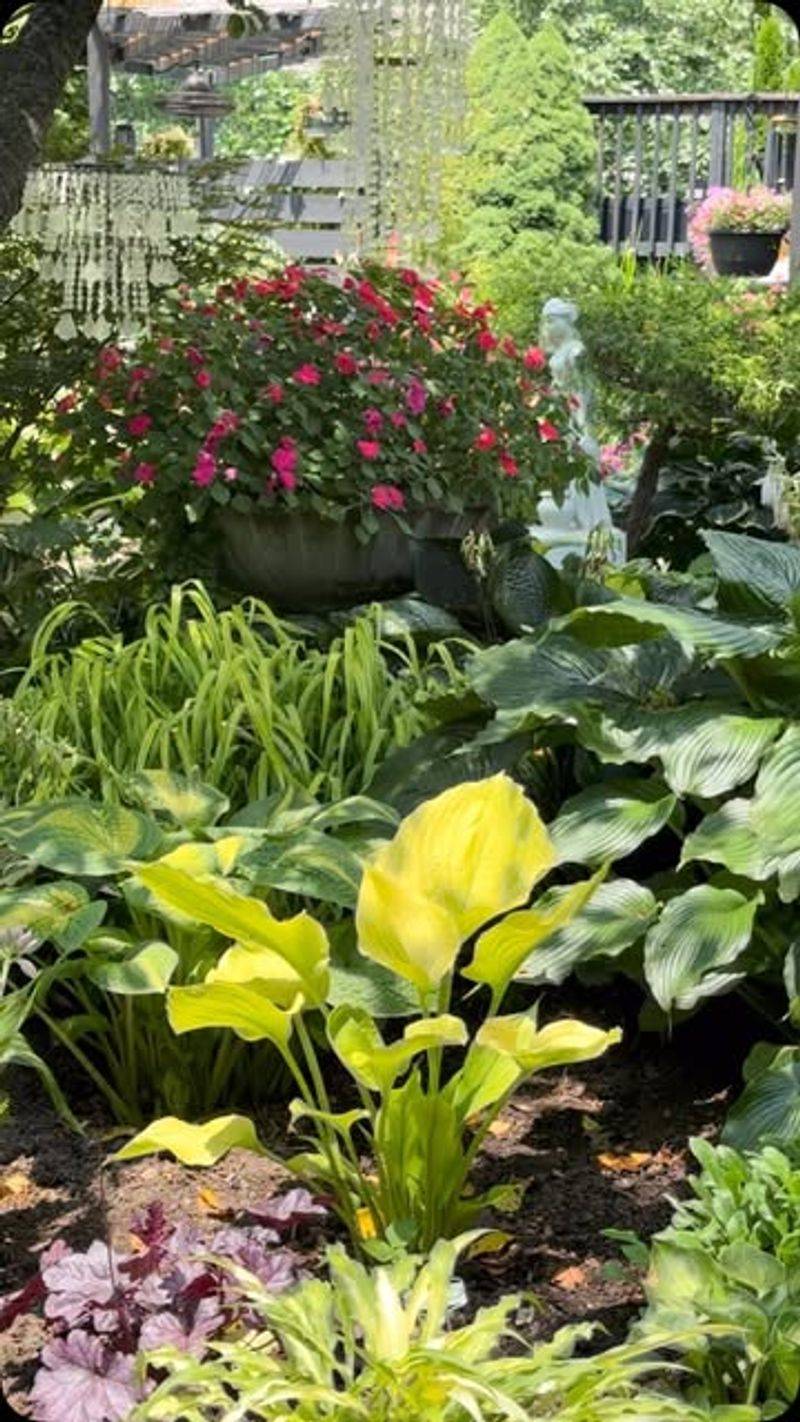Minnesota’s challenging climate demands special attention when growing hostas, but I’ve discovered 17 proven strategies that transformed my garden from struggling to spectacular. Harsh winters and hot summers used to wreak havoc on my shade garden until I adjusted my approach.
My biggest breakthrough came after learning proper planting depth for our freeze-thaw cycles. Too shallow, and the crown gets exposed during spring melt; too deep, and rot becomes a problem during wet periods.
Hostas reward patient gardeners who understand their needs. The satisfaction of watching these hardy perennials unfurl their leaves each spring makes the effort worthwhile, especially when neighbors stop to admire your garden’s transformation.
1. Choose Shade-Loving Varieties
Blue and green hostas typically perform best in Minnesota’s intense summer heat. They retain their color better than gold or variegated types when planted in deeper shade.
My ‘Blue Angel’ hostas have survived fifteen Minnesota winters without issue. The thick, corrugated leaves stand up to our weather extremes better than thinner-leaved varieties.
For north-facing gardens that receive minimal direct sunlight, try ‘Frances Williams’ or ‘Patriot’ – both have thrived in my shadiest spots for years.
2. Plant In Spring For Best Results
Early spring planting gives hostas time to establish before Minnesota’s summer heat arrives. I’ve found mid-May works perfectly after the last frost but before the temperature climbs too high.
Avoid fall planting unless absolutely necessary. Young hostas planted in autumn often haven’t developed enough roots to survive their first winter here.
When transplanting existing hostas, I wait until I can see the eyes emerging but before leaves unfurl completely – typically late April to early May in most Minnesota zones.
3. Improve Clay Soil With Amendments
Many Minnesota gardens have heavy clay soil that needs improvement for hostas to thrive. I mix in plenty of compost and aged manure before planting to improve drainage and nutrient content.
For stubborn clay, adding pine bark fines creates long-lasting soil structure. This prevents the compaction that commonly occurs during our freeze-thaw cycles.
Sand alone won’t fix clay soil – it actually makes things worse! I learned this mistake the hard way when my first hosta bed turned practically concrete-like after adding just sand.
4. Mulch Heavily Against Temperature Extremes
Minnesota’s temperature swings demand proper mulching. A 3-inch layer of shredded hardwood mulch keeps soil temperatures stable and prevents frost heaving during winter-spring transitions.
Pull mulch away from the crown in spring to prevent rot. I form a donut shape around each plant, which allows new shoots to emerge freely while still protecting the roots.
Refreshing mulch in early June after leaves have expanded helps conserve moisture during summer heat waves that frequently hit our state.
5. Water Deeply But Infrequently
Hostas in Minnesota need deep watering rather than frequent sprinkling. I give mine a good soaking once weekly, delivering about 1-1.5 inches of water directly to the root zone.
Morning watering prevents fungal issues that plague many Minnesota gardens during humid summer nights. The foliage dries completely before evening, reducing disease risk substantially.
During drought periods, which we’ve experienced more frequently in recent years, I prioritize established plants over lawn areas – healthy hostas recover faster than grass.
6. Fertilize Strategically For Our Growing Season
Minnesota’s compressed growing season means timing fertilizer applications carefully. I apply a slow-release fertilizer once in early spring when shoots first emerge – usually late April to early May depending on the year.
Avoid high-nitrogen fertilizers that stimulate soft growth vulnerable to early frosts. My hostas perform better with balanced 10-10-10 formulations that don’t push excessive leaf production.
Stop fertilizing by mid-July to allow plants to prepare for dormancy before our early fall temperature drops.
7. Divide Overgrown Plants Every 4-5 Years
Dividing keeps hostas vigorous in our challenging climate. I’ve found early spring works best – as soon as the “eyes” are visible but before leaves unfurl completely.
Use a sharp spade to slice directly through the crown, ensuring each division has at least 2-3 eyes. My largest hostas typically yield 4-5 new plants when divided this way.
Replant divisions immediately at the same depth as the original plant. Water thoroughly after replanting to help them recover from the shock.
8. Combat Deer With Strategic Barriers
Minnesota’s deer population loves hostas almost as much as gardeners do! I spray deer repellent containing egg solids every 2-3 weeks during growing season, reapplying after heavy rains.
Physical barriers work even better than sprays. My most valuable specimens grow inside decorative metal cages that protect them without being eyesores.
Interplanting hostas with deer-resistant companions like ferns, astilbe, and bleeding heart creates a natural defense system that’s worked surprisingly well in my northern garden.
9. Control Slugs With Early Intervention
Slugs thrive in Minnesota’s damp spring conditions. I start control measures in April before they become established, sprinkling iron phosphate pellets around emerging shoots.
Coffee grounds spread around plants create a barrier slugs hate crossing. The grounds’ rough texture deters them while adding trace nutrients to the soil – a win-win solution I’ve used for years.
Evening slug hunts with a flashlight after rain showers keep populations manageable. Simply drop collected slugs into soapy water to eliminate them humanely.
10. Winter Protection For Harsh Minnesota Winters
After the first hard frost, I cut back hosta foliage to prevent disease issues during spring thaw. Leaving 1-2 inches of stem helps me locate plants before new growth emerges.
Apply an extra inch of leaf mulch after cutting back to insulate crowns. Pine boughs laid over the garden provide additional protection against fluctuating temperatures that cause heaving.
Never cover hostas with plastic or impermeable materials. They need air circulation even during winter dormancy to prevent crown rot – a lesson I learned through painful experience.
11. Select Cold-Hardy Varieties For Minnesota
Not all hostas handle our Zone 3-4 conditions equally well. ‘Sum and Substance’, ‘Blue Angel’, and ‘Patriot’ have survived -30°F winters in my garden without damage.
Fragrant varieties like ‘Guacamole’ and ‘So Sweet’ offer bonus summer blooms but sometimes struggle in colder zones. I plant these in sheltered spots against south-facing foundations for extra protection.
Avoid thin-leaved varieties with yellow variegation in exposed sites. They’re first to show damage from our spring temperature fluctuations and intense summer sun.
12. Create Microclimate Protection
Hostas thrive when protected from our harsh northwest winter winds. My best specimens grow on the east side of buildings or large rocks that block prevailing winds while providing morning sun.
Planting near deciduous trees offers perfect seasonal protection. Summer shade prevents leaf scorch while winter sun reaches plants after leaves drop – ideal for Minnesota’s extreme seasons.
Groups of large containers on patios create windbreak effects for smaller hostas. This approach has saved many miniature varieties that wouldn’t survive in open garden beds.
13. Manage Spring’s Freeze-Thaw Cycles
Minnesota’s spring brings dangerous freeze-thaw cycles that push plants out of the ground. I keep protective mulch in place until danger of hard freezes passes, usually mid-May in my northern garden.
Cover emerging shoots with lightweight fabric when late frosts threaten. Even a single night of protection can prevent the black, mushy leaves that result from freeze damage to new growth.
Avoid walking on garden soil during spring thaws. Compaction around emerging hostas significantly reduces their seasonal performance.
14. Group Plants By Water Needs
Minnesota’s unpredictable rainfall patterns mean thoughtful plant grouping is essential. I place thirstier varieties like ‘Sum and Substance’ in naturally lower areas that collect moisture.
Blue hostas generally need more consistent moisture than gold or variegated types. Grouping similar varieties together allows for more efficient watering practices during our summer dry spells.
For slopes or raised areas that drain quickly, I select more drought-tolerant varieties like ‘First Frost’ and ‘Earth Angel’ that better withstand dry periods.
15. Address Foliar Nematode Problems Early
Foliar nematodes create distinctive brown streaks between leaf veins in hostas. I inspect all new plants carefully before adding them to my garden, especially those from plant swaps or divisions from friends.
At first sign of infection, remove and destroy affected leaves immediately. The microscopic pests spread through water splash, so avoid overhead watering of suspicious plants.
Some varieties show natural resistance to these pests. ‘Sum and Substance’ and ‘Blue Mouse Ears’ have remained nematode-free in my garden despite nearby infections.
16. Extend Season With Strategic Companion Plants
Minnesota’s growing season feels too short, so I extend interest by pairing hostas with early spring bulbs. Daffodils and crocus emerge while hostas are still dormant, providing color when the garden is waking up.
Late-blooming astilbe and tiarella offer summer flowers when most hostas have finished blooming. Their similar shade and moisture requirements make them perfect companions.
Fall-interest plants like toad lilies (Tricyrtis) complement hostas as they begin dormancy. The garden remains attractive even as hosta foliage yellows with approaching frost.
17. Maintain Good Air Circulation
Our humid Minnesota summers create perfect conditions for fungal problems. I space hostas according to their mature size, allowing room for air movement between plants even when fully grown.
Regular dividing prevents overcrowding that leads to disease issues. Most varieties benefit from division every 4-5 years in our climate, which maintains proper spacing naturally.
Selective pruning of lower tree branches improves air flow in shade gardens. This simple step has dramatically reduced powdery mildew problems in my most sheltered garden beds.


